Battles/wars Kerensky Offensive | Name Maria Bochkareva | |
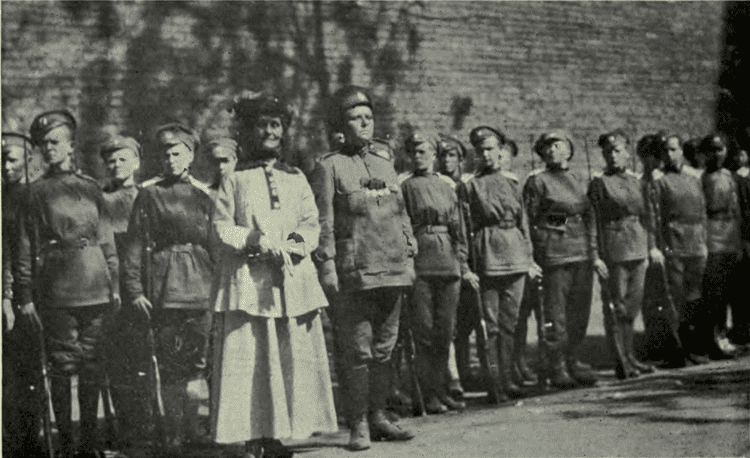 | ||
Similar People Isaac Don Levine, Nicolas Werth, Pyotr Slovtsov, Nikolay Khrenkov, Suren Spandaryan | ||
Battles and wars Kerensky Offensive | ||
Maria Bochkareva and the 1st Russian Women's Battalion of Death I WHO DID WHAT IN WW1?
How to pronounce Maria Bochkareva (Russian/Russia) - PronounceNames.com
Maria Leontievna Bochkareva (Russian: Мари́я Лео́нтьевна Бочкарёва Maria Leontievna Bochkaryova; born Frolkova (Фролко́ва), nicknamed Yashka; 1889–1920) was a Russian woman who fought in World War I and formed the Women's Battalion of Death. She was the first Russian woman to command a military unit.
Contents
- Maria Bochkareva and the 1st Russian Womens Battalion of Death I WHO DID WHAT IN WW1
- How to pronounce Maria Bochkareva RussianRussia PronounceNamescom
- Early life
- Military career
- United States and Britain
- Return to Russia and execution
- References

Early life
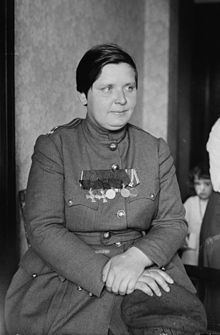
Maria Frolkova was born to a peasant family in the Nikolsko, Russia in July 1889. She was exposed to the military at an early age. Her father was a sergeant in the imperial army who fought in the Russo-Turkish War. She left home at the age of sixteen to marry Afanasy Bochkarev and they moved to Tomsk, Siberia where they worked as laborers. When her husband began to assault her, Bochkareva left him and found job as a servant, not knowing that her employer was a brothel owner forcing Maria to work in her establishment. They moved her to Sretensk where Maria began relationship with a local Jewish man named Yakov (or Yankel) Buk. She and Buk opened a butcher shop, but in May 1912, Buk was arrested for larceny and sent to Yakutsk. Bochkareva followed him into exile, primarily on foot, and the couple established another butcher shop. Buk was caught stealing again and sent to the remote settlement of Amga in 1913, and once again Bochkareva followed him. Buk began drinking heavily and soon became abusive.
Military career

At the outbreak of World War I in 1914, Bochkareva left Buk and returned to Tomsk. In November, she was rejected by the 25th Tomsk Reserve Battalion of Tomsk in the Imperial Russian Army. The commander suggested that she try joining the Red Cross instead. She was determined to enter a battlion by securing the personal permission of Tsar Nicholas II. After three months on training, she began front-line duty with the 5th Corps, 28th Regiment of the Second Army, stationed at Polotsk. At this time during her service, she was decorated for rescuing fifty wounded soldiers from the field.
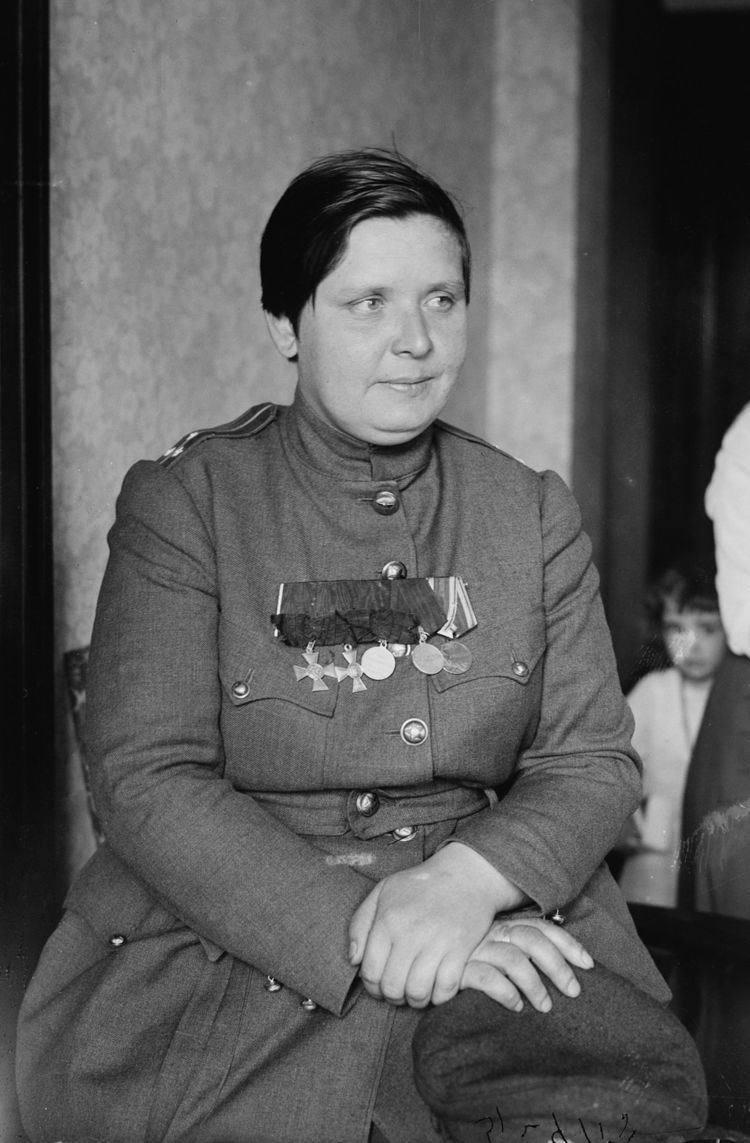
While wounded in arm and leg, Bochkareva worked as a medical sister until she returned to the front as a corporal where she was in charge of eleven men.
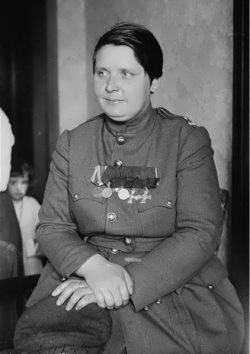
She had succumbed to another injury that had left her paralyzed for four months, and again after she recovered, she returned to the front as a senior non-commissioned officer delivering supplies to a platoon of seventy men. Men of the regiment treated her with ridicule or sexually harassed her until she proved her courage in battle. Eventually, she became exhausted from her physical injuries and no longer motivated to continue in her military post due to the demoralizing actions of the men. She was granted discharge in the spring of 1917.
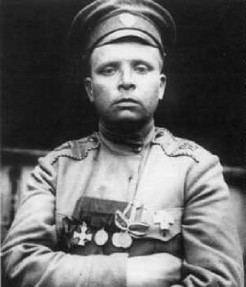
After the abdication of the Tsar in early 1917 due to the February Revolution, she had recommended to Mikhail Rodzianko with creating an all-female combat unit which she claimed would fix the problem of army morale. She believed it would shame the men into being more in favor of the war effort again. Once she agreed to lead the unit, her proposal was approved by the Army Commander in Chief Brusilov, and she approached Minister of War Alexander Kerensky. Although female recruitment went against army regulations, the all female battlion was granted special dispensation. This was the first women's battalion to be organized in Russia. Bochkareva's 1st Russian Women's Battalion of Death initially attracted around 2,000 women volunteers, but the commander's strict discipline drove all but around 300 dedicated women soldiers out of the unit.
The training of the battlion was rushed and was led by twenty-five male instructors from the Volunskii Regiment of the Petrograd Military District. Her battlion was blessed at Saint Isaac's Cathedral on June 25, 1917. After a month of intensive training, Bochkareva and her unit became attached to the First Siberian Corps and sent to the Russian western front to participate in the Kerensky Offensive where Bochkareva was promoted to the rank of Lieutenant. The unit was involved in one major battle, near the town of Smarhon. The women of the unit performed well in combat, but the vast majority of male soldiers, already long demoralized, had little inclination to continue fighting. Bochkareva herself was wounded in the battle and sent back to Petrograd to recuperate.
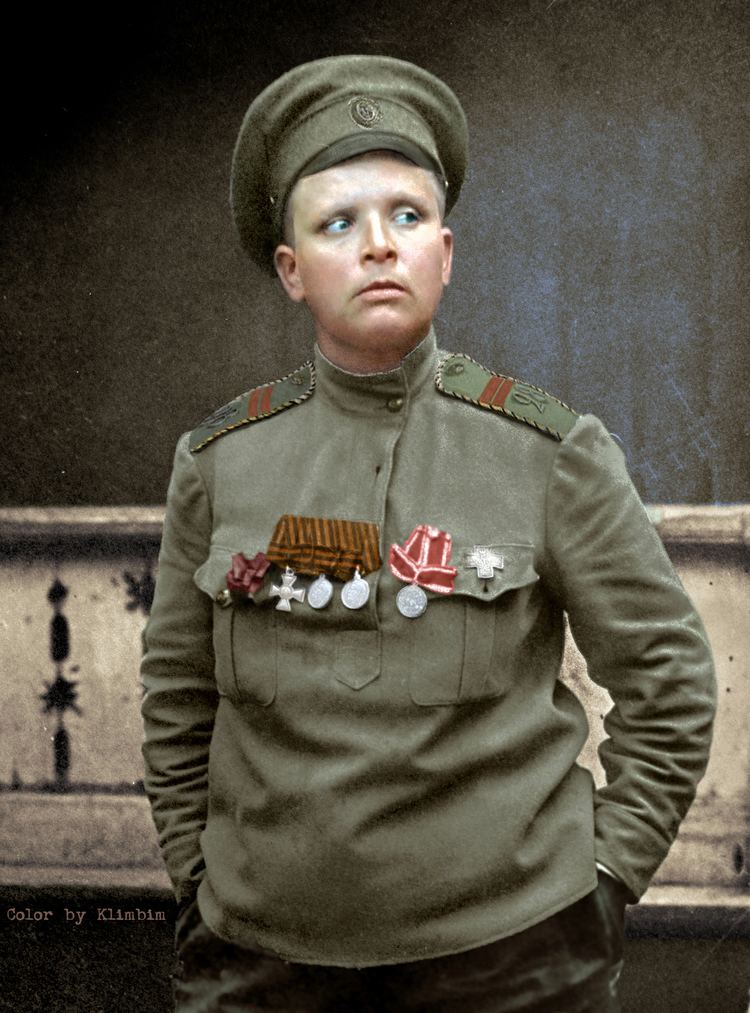
Bochkareva was only marginally involved in the creation of other women's combat units formed in Russia during the spring and summer of 1917. Her unit was at the front at the time of the Bolshevik October Revolution and did not participate in the defense of the Winter Palace (this was another women's unit, the 1st Petrograd Women's Battalion). The unit disbanded after facing increasing hostility from the male troops remaining at the front. Bochkareva returned to Petrograd where she was initially detained by the Bolsheviks but released shortly thereafter. She secured permission to rejoin her family in Tomsk, but left for Petrograd again in early 1918. She claims to have then received a telegram asking her to take a message to General Lavr Kornilov, who was commanding a White Army in the Caucasus. After leaving Kornilov's headquarters she was again detained by the Bolsheviks, and after learning her connection with the Whites, was scheduled to be executed. She was rescued, however, by a soldier who had served with her in the Imperial army in 1915 and who convinced the Bolsheviks to stay her execution. She was granted an external passport and allowed to leave the country. Bochkareva then made her way to Vladivostok, where she left for the United States by steamship in April 1918.
United States and Britain
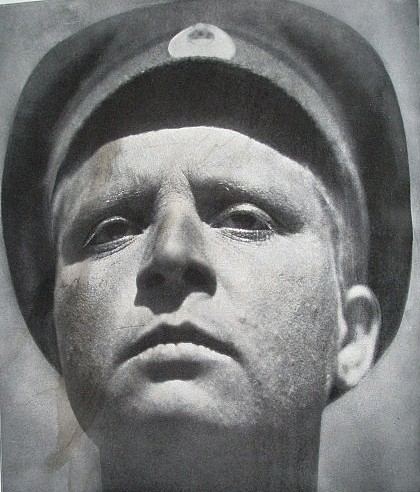
Bochkareva arrived in San Francisco and then made her way to New York City and Washington, D.C, sponsored by the wealthy socialite Florence Harriman. She was given a meeting with President Woodrow Wilson on July 10, 1918, during which she begged the president to intervene in Russia. Wilson was apparently so moved by her emotional appeal that he responded with tears in his eyes and promised to do what he could.
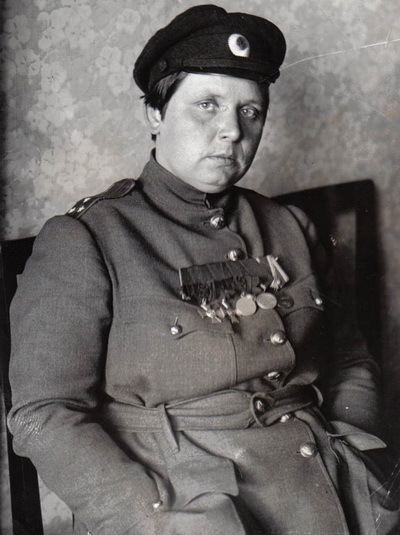
While in New York, Bochkareva dictated her memoirs, Yashka: My Life As Peasant, Exile, and Soldier to a Russian emigre journalist named Isaac Don Levine. After leaving the United States she traveled to Great Britain where she was granted an audience with King George V. The British War Office gave her funding to return to Russia.
Return to Russia, and execution
Bochkareva arrived in Arkhangelsk in August 1918 and attempted to organize another unit, but failed.
In April 1919, she returned to Tomsk and attempted to form a women's medical detachment under the White admiral Aleksandr Kolchak, but before she could complete this task she was captured again by the Bolsheviks. She was sent to Krasnoyarsk where she was interrogated for four months. Ultimately, against Lenin's orders, she was sentenced to death and executed as an "enemy of the working class." She was shot by the Cheka on May 16, 1920. She was posthumously pardoned and exonerated by Lenin and the Cheka agents who ordered her execution were executed themselves for not following orders.
